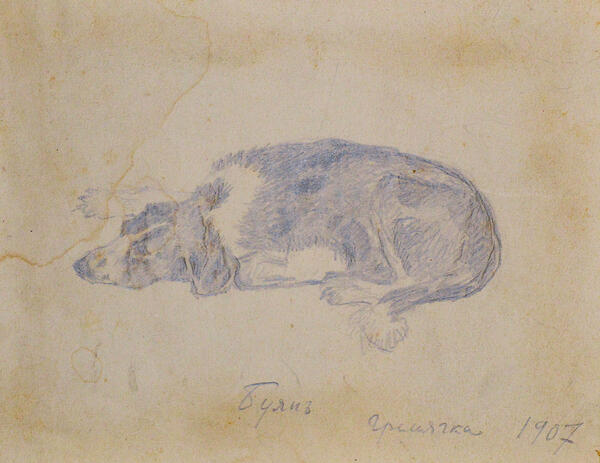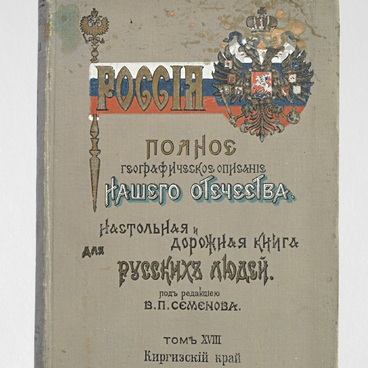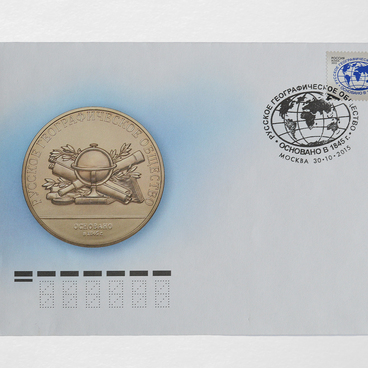The author of the drawing from the museum collection was Sergei Orlov, the younger brother of Nadezhda Semyonova-Tyan-Shanskaya, who was married to Ismail Semyonov-Tyan-Shansky, son of the geographical scientist. At the beginning of the twentieth century, the brothers Andrey and Sergey Orlov on frequent occasions visited the Semyonov-Tyan-Shanskys' estate called Gremyachka, located in the Ryazan province. Buyan is one of the favorite hounds of Andrey Semyonov-Tyan-Shansky’s, the famous Russian natural scientist, and keen hunter and fisherman.
Sergei Orlov (1880-1958) was also a renowned scientist, astronomer, professor and dean of the Technical Faculty of Perm University. After graduation from Moscow First Gymnasium in 1899, he entered the Faculty of Mathematics and Physics of Moscow University. Orlov started his scientific career in his student days, when he carried out observations at the University Observatory, and some time later, he became a leading researcher in his field.
After graduation from university, in 1904, he kept on working at the Observatory and started teaching, however he had to take a break, as Orlov was called up for military service during the Russo-Japanese War. From 1906 to 1914 he held classes at the First Gymnasium and started studying comets. Later he was in the army once again, got wounded and returned to the Gymnasium, where he taught mathematics and physics. In the 1920s, he became professor at Perm University, where he headed the Astronomy and Physics department, and later was appointed Dean.
In 1926 Orlov became a professor at Moscow University, giving courses in astrophysics and astronomy. He developed the classical school of Moscow astronomers. Orlov was awarded the State Stalin Prize for researches entitled ‘Comets’ and ‘The Origin of Comets’ published in 1941, and the work ‘Head of comet and reclassification of cometary shapes’ finished in 1942. He also designed special camera for photographing comets and developed photogrammetry method — a technique for determining shape, size, position and other characteristics of space objects.
Sergei Orlov (1880-1958) was also a renowned scientist, astronomer, professor and dean of the Technical Faculty of Perm University. After graduation from Moscow First Gymnasium in 1899, he entered the Faculty of Mathematics and Physics of Moscow University. Orlov started his scientific career in his student days, when he carried out observations at the University Observatory, and some time later, he became a leading researcher in his field.
After graduation from university, in 1904, he kept on working at the Observatory and started teaching, however he had to take a break, as Orlov was called up for military service during the Russo-Japanese War. From 1906 to 1914 he held classes at the First Gymnasium and started studying comets. Later he was in the army once again, got wounded and returned to the Gymnasium, where he taught mathematics and physics. In the 1920s, he became professor at Perm University, where he headed the Astronomy and Physics department, and later was appointed Dean.
In 1926 Orlov became a professor at Moscow University, giving courses in astrophysics and astronomy. He developed the classical school of Moscow astronomers. Orlov was awarded the State Stalin Prize for researches entitled ‘Comets’ and ‘The Origin of Comets’ published in 1941, and the work ‘Head of comet and reclassification of cometary shapes’ finished in 1942. He also designed special camera for photographing comets and developed photogrammetry method — a technique for determining shape, size, position and other characteristics of space objects.



